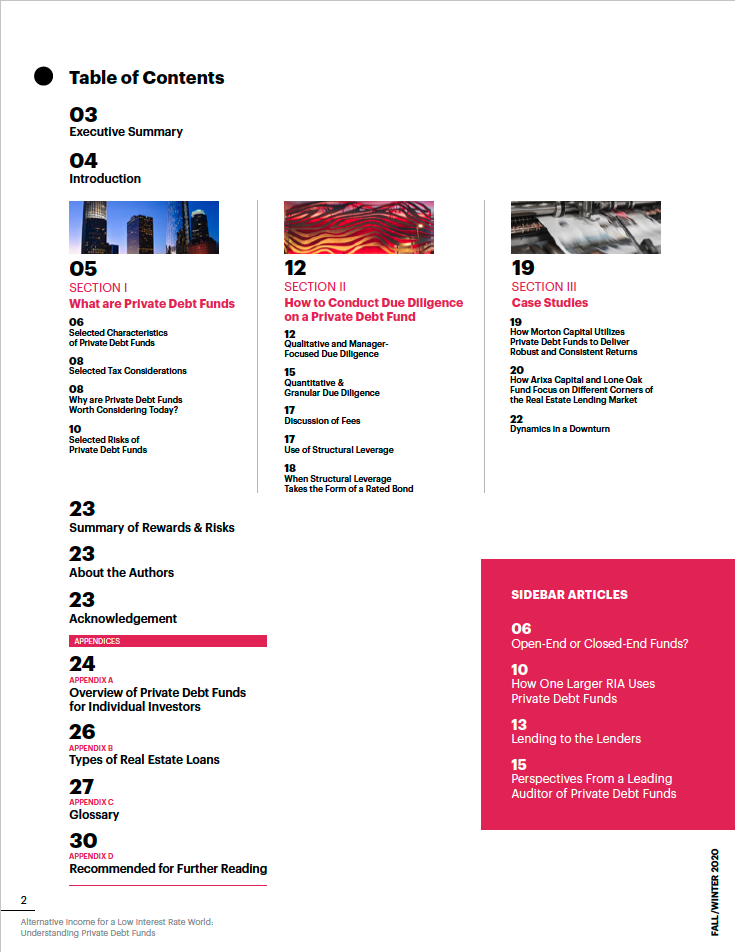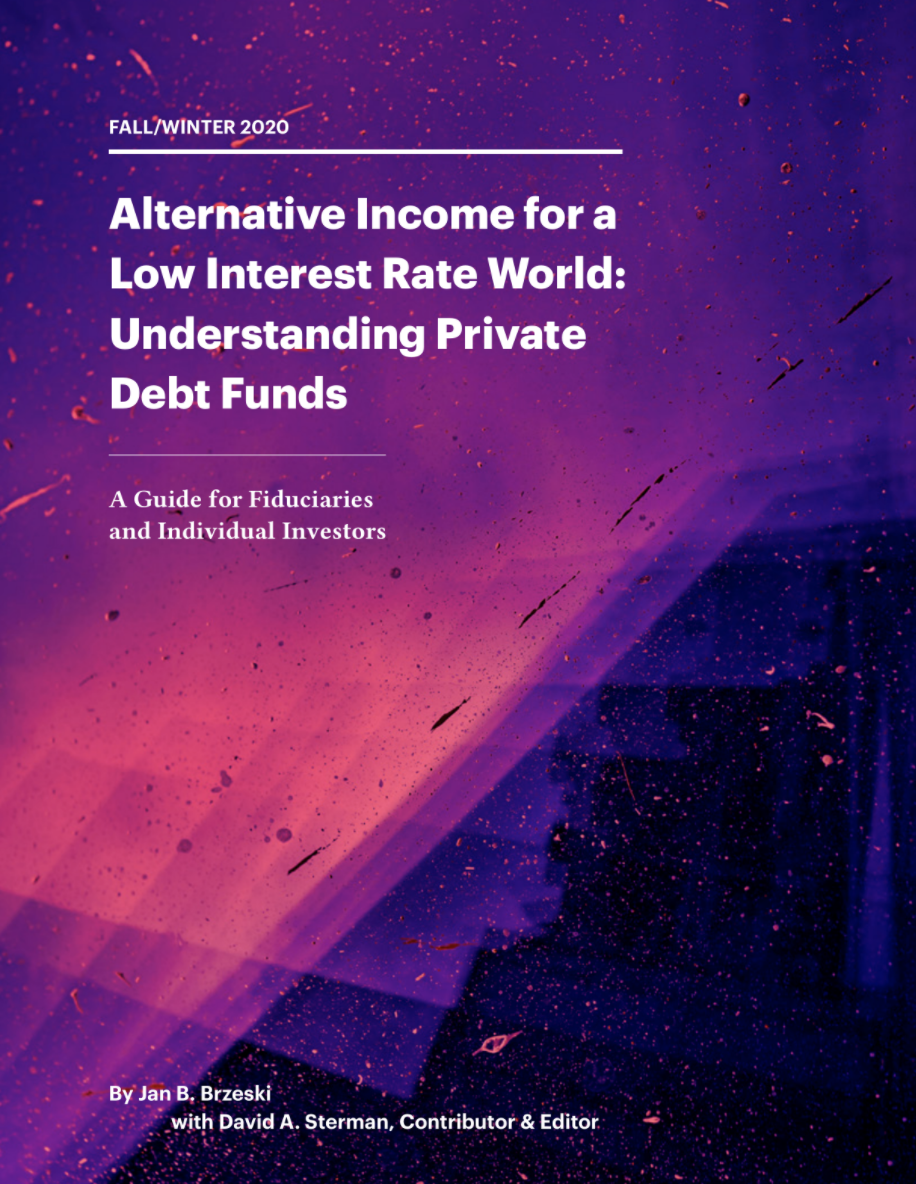Alternative Income for a Low Interest Rate World: Understanding Private Debt Funds
A Guide for Fiduciaries and Individual Investors
 |
 |
 |
What You'll Learn:
In an era of ultra-low interest rates, Registered Investment Advisors (RIAs) are increasingly seeking out fixed income alternatives that provide robust yields with strong track records of minimal volatility and risk. Private debt funds are garnering greater interest, and increasing fund flows. These funds are offered by specialized financial institutions, often replacing a role played by traditional banks, that exited various lines of business after the Great Financial Crisis (GFC).
- While private debt funds don’t have the volatility of publicly-traded investments, they usually come with liquidity restrictions, which makes them more suitable as an anchor of a long-term portfolio.
- Various studies point to a relatively strong level of expected returns for private debt funds in the next decade, on both an absolute and risk-adjusted basis.- RIAs must ensure they conduct proper and thorough due diligence on private debt funds, the firms that manage them, and their long-term track record. Communicating their relative merits to clients is also essential.
- While near-term economic challenges remain paramount for many advisors, conservative lending standards, with loan-to-value ratios rarely exceeding 65%, have enabled the most prudent private debt funds to largely avoid losses of principal.
- Industry operators tend to deploy their expertise within specific segments of the real estate market and focus on various sizes and durations of loans issued. In some cases, structural leverage can be deployed to enhance returns.

